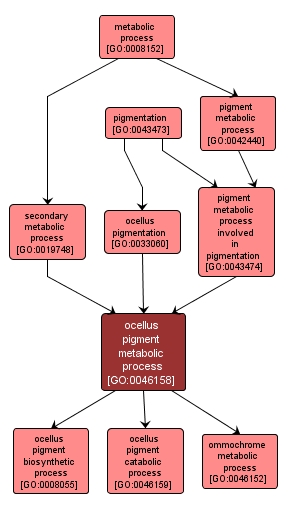GO TERM SUMMARY
|
| Name: |
ocellus pigment metabolic process |
| Acc: |
GO:0046158 |
| Aspect: |
Biological Process |
| Desc: |
The chemical reactions and pathways involving ocellus pigments, any general or particular coloring matter in living organisms, found or utilized in the ocellus, a minute simple eye found in many invertebrates. |
Synonyms:
- ocellus pigment metabolism
|
|

|
INTERACTIVE GO GRAPH
|














